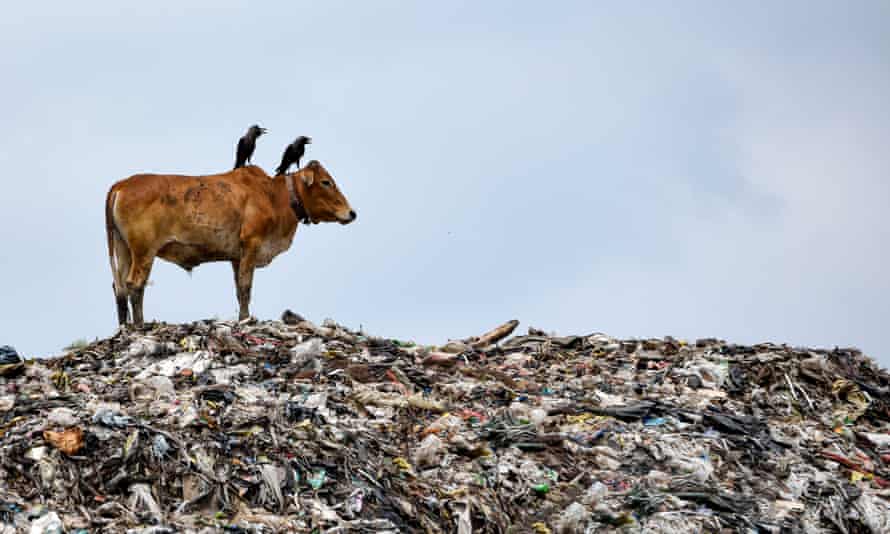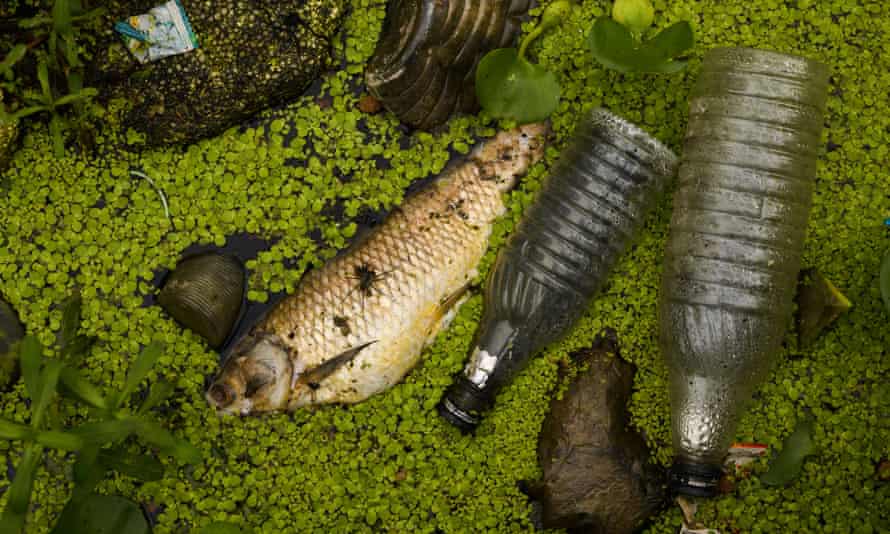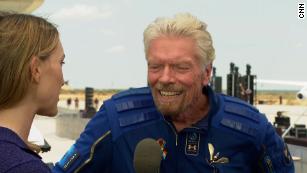Safe space: the cosmic importance of planetary quarantine
As the pace and ambition of space exploration accelerates, preventing Earth-born organisms from hitching a ride has become more urgent than ever
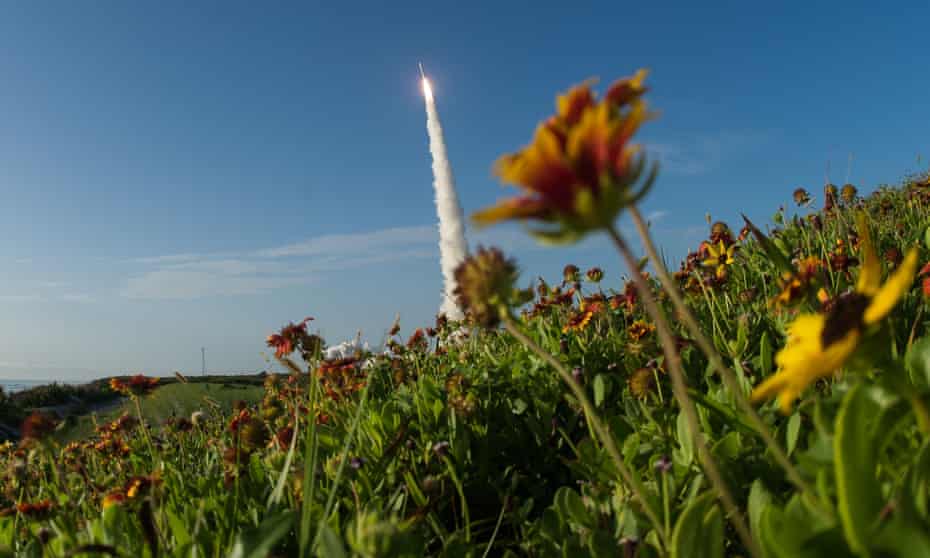
A rocket carrying Nasa’s Perseverance rover to Mars launches from Florida in July 2020. Photograph: Xinhua/Rex/Shutterstock
Tue 13 Jul 2021
“This, what you’re doing today, never happens,” Nasa’s David Seidel told us. “This is a rare chance,” agreed the director of the Jet Propulsion Laboratory, Michael Watkins, welcoming us into the lab’s spacecraft assembly facility, located in the hills outside Pasadena, California. The exceedingly unusual adventure awaiting us was a trip into the clean room where Perseverance, Nasa’s latest Mars rover, having been assembled under conditions of exacting sterility, sat awaiting shipment to Cape Canaveral.
Our visit, in December 2019, had been prefaced by a long email laying out extremely detailed rules: we were instructed not to wear any perfume, cologne, makeup or dangly earrings; flannel, wool or frayed clothing was not allowed; even our fingernails had to be smooth, rather than jagged. After a quick welcome, our phones and notebooks were confiscated, and a hi-tech doormat vacuum-brushed the soles of our shoes. In the gowning room, we were issued with face wipes, a sterile full-body “bunny suit”, plastic overshoes, hood, gloves and face mask, then offered a mirror in which to admire the final look. Finally, we were sent through the air shower – an elevator-sized chamber studded with nozzles that blasted us with pressurised air from all sides, in order to dust off any final stray particles – before stepping out into a white-floored, white-walled room filled with white-suited engineers.
The rover itself – a white go-kart the size of an SUV – was cordoned off behind red stanchions. The obsessive attention to cleanliness required in order to enter the rover’s presence was, in part, to protect the machine’s sensitive optical equipment and electronics: volatile chemicals, loose fibres or even flakes of human skin could damage its delicate circuitry or settle on one of its 23 camera lenses. But the primary purpose was planetary quarantine: preventing the importation of Earth life to Mars. “I don’t know that we can say it’s the most sterile object that humans have ever created,” said one engineer. “But it’s extremely clean.”
It is a condition of space exploration that we cannot search for life on alien planets without bringing along very small amounts of very small Earth life. This process is known as forward contamination, and minimising it, if not preventing altogether, is the ultimate responsibility of Nasa’s planetary protection officer – “the second-best job title at Nasa,” according to Cassie Conley, who held it from 2006 until 2018. (The best job title, Conley told us, was director of the universe, but that position was sadly eliminated in an institutional reorganisation.)
The practice of planetary quarantine dates back to the 1950s, when it became clear that rocket technology was shortly going to put outer space within human reach for the first time. In an ideal universe, the robotic spacecraft that we send to explore the cosmos would be sterile. (Humans are, by definition, contaminants.) In reality, for technical and economic reasons, they are not. But the consequences of transferring biological material between celestial bodies are a fractal example of unknown unknowns: we don’t know what forms of Earth life might survive a space journey, which of them might then flourish in whatever extraterrestrial conditions await them, and whether life even exists elsewhere in the solar system, let alone how it might be harmed by Earth life – or vice versa.
Faced with such extreme uncertainty, but unwilling to stay at home, spacefarers, like so many before them, have turned to quarantine as the buffer that will allow them to explore space without endangering Earth or inadvertently polluting the cosmos. Quarantine as a practice – a period of time, traditionally 40 days, in which a suspicious person or object is watched for signs of disease until proven safe – was formalised and named during t e Black Death in the 14th century. Its rationale, and its implications, have become familiar to generations of humans during outbreaks over the subsequent centuries, most recently during the Covid-19 pandemic. On a daily basis, the complex calculus of quarantine is used to balance freedom of movement and risk in the global commodities trade – in cattle, for example, or citrus, or cacao plants. In a cosmic context, however, where the potential threat is almost entirely speculative but the stakes are existential, what role should quarantine play?
The person in charge of protecting “all the planets, all the time” – as international planetary protection policy puts it – works out of a small office inside Nasa’s headquarters, a squat, undistinguished building in Washington DC. Just a couple of blocks north, in between the US Botanic Garden and the Air and Space Museum, lies a fairly recent addition to the Mall: the National Museum of the American Indian. It was established in response to the revelation that the National Museum of Natural History held the skeletons of nearly 20,000 Native Americans in its collections. Those remains, collected by force as the spoils of colonisation, are a reminder of the much larger toll incurred when two long-separated biospheres came into contact: “The greatest destruction of lives in human history,” according to the geographer W George Lovell. The concept of planetary quarantine arose at least partially in response to the catastrophic impact of that initial encounter.
Advertisement
It is impossible to know how many people lived in the Americas in 1491, before European explorers made first contact, but historians estimate that nine out of every 10 people in the New World died in the century or so that followed – most from infectious diseases. Before the conquistadors had even set foot in the major cities of South and Central America, their microbes had travelled ahead of them, passed from body to body, causing mass deaths. Without any previous exposure to smallpox, measles, influenza, typhus or diphtheria, the indigenous people of the Americas had no immunity to these common Old World diseases – and no concept of quarantine, having never had much need for it.
In 1957, as the Soviets successfully launched Sputnik and the cold war militarisation of space began to ramp up, some scientists began to worry that the encounter between Earth organisms and any lifeforms that might exist elsewhere in the solar system might also result in mutually assured destruction. Even prior to Nasa’s founding in 1958, the Stanford microbiologist Joshua Lederberg had begun making the case for an international agreement to prevent the contamination of extraterrestrial environments with Earth life, and vice versa. “We are in a better position than Columbus was to have our cake and eat it, too,” he wrote, arguing that planetary quarantine was essential to the “orderly, careful, and well-reasoned extension of the cosmic frontier”.
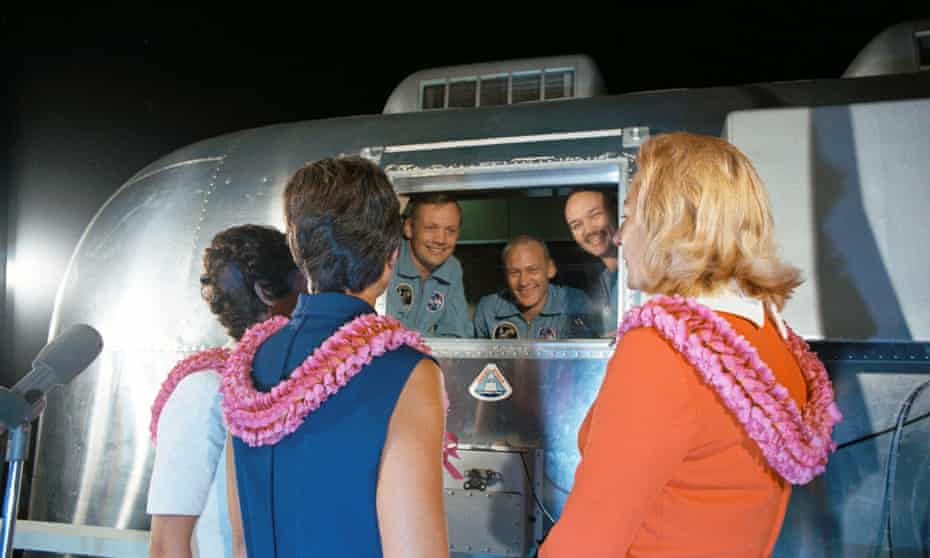
Lederberg seems to have been primarily motivated by concern for the scientific loss that would occur if Earth life wiped out alien life, rather than the ethical dimensions of such a tragedy. “The overgrowth of terrestrial bacteria on Mars would destroy an inestimably valuable opportunity of understanding our own living nature,” he argued.
Others felt humans had a moral responsibility to avoid causing harm elsewhere in the galaxy. CS Lewis, better known for chronicling the fantasy world of Narnia, also wrote a space-themed trilogy in which he despaired at the idea that a flawed and sinful humanity, “having now sufficiently corrupted the planet on which it arose”, would overcome “the vast astronomical distances which are God’s quarantine regulations” and “seed itself over a larger area”. In the science community, one of Lederberg’s allies, the young astronomer Carl Sagan, later wrote that if there was life on Mars, humans must leave the planet alone. “Mars then belongs to the Martians, even if they are microbes,” he declared.
Largely as a result of Lederberg and Sagan’s campaign, the International Council of Scientific Unions, a non-governmental organisation dedicated to international cooperation in the advancement of science, formed Cospar, the Committee on Space Research, which still sets the ground rules for extraterrestrial exploration.
Cassie Conley, the former planetary protection officer, who often wears her hair in a long braid, is personally more aligned with Lewis. “I don’t particularly like humans,” she told us, as we sat in her office, the light outside fading. “I think we screwed up this planet well enough that we don’t deserve another one – but that’s just my personal bias and I’m very careful not to bring it into my job.”
Conley got that job when some of the tiny worms she had sent into orbit aboard the space shuttle Columbia in 2003, in order to study muscle atrophy in microgravity, were found to have survived the shuttle’s disastrous explosion. Her experiment provided an inadvertent demonstration that multicellular life might be able to survive a meteorite impact – and thus potentially spread between planets on meteors – and it caught the eye of then planetary protection officer John Rummel.
Advertisement
Rummel invited Conley to Washington on a year’s placement, and then, as he gradually eased his way toward the exit, left her to inherit the role. As a scientist, Conley is deeply curious about what we might find elsewhere in the universe. “I’m very interested in understanding the evolution of life,” she told us. But she is more invested in ensuring that we don’t do something that precludes the possibility of answering those questions before we even have the ability to ask them. “The best way to prevent forward contamination is simple: don’t go there,” she said. “But we’ve already decided we want to go there, so it’s a case of: in the absence of information, don’t do something that might reduce your ability to get information in the future.”
Back in the 1960s, as the scientific community tried to decide what form planetary protection should take, Nasa engineers were faced with two irreconcilable demands: internally, management insisted that anything the agency sent into space must be utterly sterile, while, on national television, John F Kennedy promised that the US would put a man – and his trillions of accompanying bacteria – on the moon by the end of the decade. In the absence of any absolute certainties, Cospar dithered, eventually deciding that planetary quarantine would have to operate based on a complex algebra of acceptable risk, in which the probability that a viable microbe would be brought to a planet on a landing craft would be divided by a guesstimate of how likely it was to survive there, in order to arrive at a global contamination allowance that could be divided between each spacefaring nation.
To fill in the parameters in that formula, Nasa began looking at the bacterial kill rates of different sterilisation techniques used in the food-processing industry, as well as in the army’s bioweapon laboratories at Fort Detrick in Maryland. Using a particularly hardy spore-forming bacteria as their model for a series of tests, Nasa scientists fumigated, irradiated and baked spacecraft components before smashing them to see how many bugs survived, lurking in cracks and in the threads of screws and bolts. They determined that it was possible to clean a spacecraft sufficiently well that only one in every 10,000 landings would transport a viable microorganism.
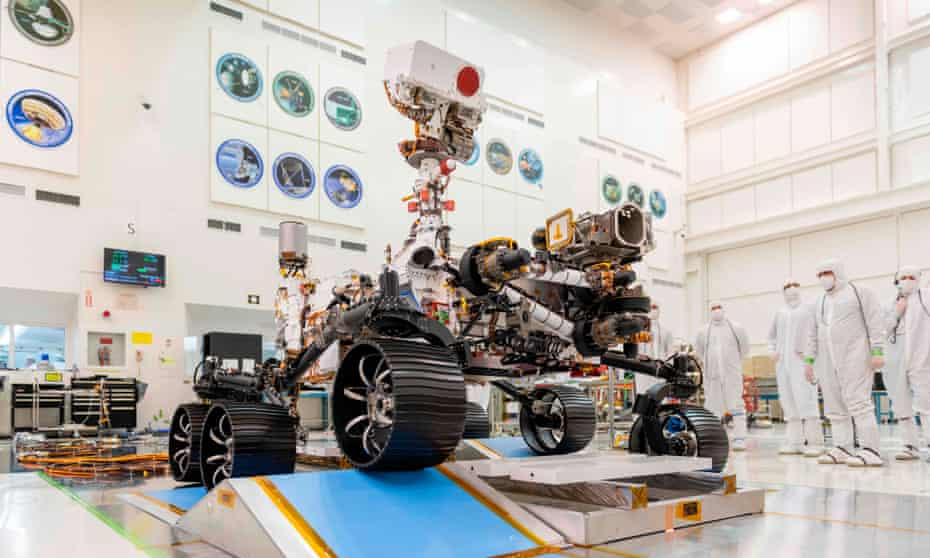
The likelihood that Earth life could survive on a particular solar system body was even harder to pin down. Somewhat arbitrarily, Cospar recommended that, for planets of biological interest, the total acceptable risk be kept to no more than a one in 1,000 chance of seeding another planet with terrestrial life in the course of exploring it. In the end, “acceptable” simply meant a figure that was the best engineers could achieve without breaking the budgets of member states’ space agencies. The total risk – a 0.1% chance of contamination – was then divided up among the spacefaring nations, with the US, as one of just two spacefaring superpowers, receiving nearly half of the total allocation.
Once astronauts get involved, though, all bets are off. Cospar’s framework is intended to cover only the short window of time during which a planet remains uncontaminated (and thus alien) enough to be of “biological interest”. Originally, this period was set at an optimistic 20 years – in the heady days of the space race, scientists estimated that, for example, dozens of missions to Mars would take place during that time, allowing its indigenous biology to be thoroughly understood. It has since been extended.
By the mid-70s, as the Apollo programme drew to a close and as Viking 1 and Viking 2, the first Martian landers, sent back data that painted a picture of a much harsher, drier environment than many scientists had hoped for, it began to seem as if the rest of the solar system was lifeless – making the need for quarantine moot. Indeed, many at Nasa and other space agencies chafed under planetary protection protocols, whose implementation made missions more expensive and limited onboard experiments to those whose hardware could survive the rigours of decontamination.
Crafting the original Cospar standards for what measures would adequately protect an imagined form of life in an unknown landscape from an inadequately defined threat was little more than an exercise in speculative extrapolation. In the 90s, Nasa embarked on a series of research programmes designed to reduce this uncertainty. The better the data in their models of probable contamination, the more precisely tailored the level of protection could be. (In human terms, this is analogous to implementing quarantine based on data from robust testing and contact tracing, so that most normal life and economic activity can continue, as opposed to a complete, indiscriminate lockdown.)
In the past two decades, a series of missions has begun to fill in some of the gaps in our knowledge of conditions in the solar system, sending back promising news of briny oceans on one of Jupiter’s moons, Europa, and abundant sources of molecular energy on Enceladus, one of Saturn’s satellites. A series of probes and rovers sent to Mars has returned signs of liquid water and seasonal methane clouds. “Mars continues to surprise us,” Conley said. “This is a good problem to have.” Even the Earth’s moon seems more interesting than it used to, with recent observations confirming the presence of water ice at its poles and in the “cold traps” created by permanently shadowed regions.
Advertisement
Meanwhile, a lot of new research, much of it Nasa-funded, has redefined our understanding of the extraordinary capabilities of Earth microbes. In deep caves and deserts, thermal vents at the bottom of the sea, and even cans of irradiated ground meat, researchers have discovered microbes that can survive crushing pressure, blistering heat and caustic alkalinity, without sunlight, water or any of life’s typical thermodynamic levers. Many of these so-called extremophiles seem well adapted to Martian conditions, particularly beneath that planet’s surface.
To learn more, we visited the New Mexico home of the speleo-biologist (a researcher of cave-dwelling organisms) Penelope Boston, who, at the time of our visit in August 2012, was serving on Nasa’s planetary protection advisory committee. Boston’s first real caving experience, decades earlier, was in the nearby Lechuguilla Cave, where she twisted her ankle, popped a rib, acquired an infection that swelled her eye shut, and discovered several novel organisms – microbes whose metabolism, life cycle and chemical proclivities rendered them almost unrecognisable as biology.
“I really think it’s the subsurface of Mars where the greatest chance of extant life, or even preservation of extinct life, would be found,” Boston told us as we sat on her couch, surrounded by space-themed art and memorabilia. The cave organisms that Boston has since spent much of her career studying exist on an entirely different timescale, she explained, reflecting an environment in which they have few or no predators but extremely limited sources of energy. “I think this is a long-term, evolutionary repository for living organisms,” Boston said. On Mars, whose environment seems to oscillate between freezing aridity and something that is perhaps more clement, Boston speculates that subterranean life could lie dormant for millennia, reawakening only when conditions improve.

Boston’s work has led her to implement planetary protection protocols here on Earth, to avoid introducing surface life into the extreme depths that she explores. Nasa’s current planetary protection officer, the bio-geochemist Lisa Pratt, who took over from Conley in 2018, has discovered the extraordinary capabilities of subterranean life herself: her earlier research included the discovery of slow-growing bacteria living under enormous pressure at the bottom of a goldmine in South Africa, where they subsist solely on the byproducts of radioactive energy.
Unfortunately, the other extreme environment in which many of these extremophiles thrive is the spacecraft assembly room in which we visited Perseverance, the rover Nasa was about to send to look for life on Mars. Nasa’s rigorous cleaning and decontamination processes turn out to inadvertently select for the kinds of microorganisms that don’t mind high heat, extreme aridity and low nutrient levels. Dotted around the facility, in between the rover, its heat shield and its descent stage, were what the microbiologist Kasthuri Venkateswaran called “witness plates” – two-inch-square samples of the materials used to build the spacecraft, which he periodically swabs to develop a snapshot of the room’s bacterial inhabitants.
Venkateswaran, who is universally known as Venkat, told us that his inventories of clean-room biodiversity have revealed the mundane and the extraordinary living side by side. “I don’t want to see the headline that dog shit is in the Jet Propulsion Laboratory clean room,” he warned us, before admitting that, despite all the precautions, microbes that are found almost exclusively in dogs’ guts still show up on his witness plates, shed by engineers with pets. Meanwhile, in 2009, Venkat discovered an entirely new genus of extremely salt- and acid-tolerant bacteria on the surface of a spacecraft, which he named Rummeliibacillus, after John Rummel, the former planetary protection officer. In 2016, researchers came across Rummeliibacillus again, this time in soil from Antarctica. Other novel organisms isolated from the clean room have since shown up in a Colorado mine and a hydrothermal vent at the bottom of the Indian Ocean.
Venkat’s microbial census serves several purposes. He archives them, storing thousands of strains of bacteria in a special freezer in anticipation of a future scenario in which life is discovered in a sample from Mars, and researchers need to rule out the possibility that we actually carried it there and back with us. He also uses them as model organisms with which to develop new cleaning and sterilisation technologies. “If we’re able to knock these hardies, then we will be able to kill the other stuff also,” he said.
Recently, he has started sending some of the toughest candidates up for 18-month stints aboard the International Space Station, to test whether they might be able to survive a lengthy journey under the intense UV radiation of space. One strain of Bacillus pumilus, named SAFR-032 (where SAF stands for spacecraft assembly facility), was damaged but not killed by its vacation in the vacuum of space – which, Venkat told us, means it could “potentially survive for millions of years once deposited on the Martian surface”. (He is now analysing the survivors to see whether their unique UV-resistant biochemistry could be adapted for use in sunscreen.)
Some of Earth’s extremophiles are now Martians; that much is evident. “We know there’s life on Mars already because we sent it there,” Nasa’s former chief scientist John Grunsfeld admitted in 2015. Whether these microbes can emerge from dormancy and grow – whether they, as Venkat put it, are capable of “making the red planet green” – is much less well understood. Nasa’s research programme was designed to accumulate the data necessary to produce a more efficient planetary quarantine programme. But while it has yielded a wealth of new knowledge about Earth and space, it seems to have raised more questions than it has answered.
“We can use all these wonderful instruments that we load on to vehicles like Curiosity and we can send them there,” Penelope Boston admitted. “We can do all this fabulous orbital stuff. But, frankly speaking, as a person with at least one foot in Earth science, until you’ve got the stuff in your hands – actual physical samples – there is a lot you can’t do.”
Perseverance, or Percy, as Nasa has begun to call it, which embarked on its journey to Mars just a few months after our visit, and landed safely in February 2021, represents the first step towards alleviating that frustration. We marvelled at it from behind stanchions as engineers pointed out the UV spectrometer intended to search for trace organic chemistry, and the tiny chunk of Martian meteorite, recovered from Oman and donated by London’s Natural History Museum, that is mounted on to the instrument’s robotic arm to serve as a calibration target. We scribbled notes about which deodorant technicians are allowed to wear (Mitchum unscented) on special, shiny blue clean-room paper, bonded with polyethylene so it doesn’t shed lint and particles – in the context of spacecraft assembly, normal paper is considered a contaminant. But the part we really wanted to see – the carousel of 43 cigar-sized metal tubes that will ultimately hold the Martian rocks that Perseverance will drill and cache – wasn’t there.
As it turned out, the tubes were in a nearby building, awaiting final sterilisation: oven-baking at high temperatures for an extended period in a process that would damage the other instruments on the rover but will successfully eliminate any trace of terrestrial biochemistry. After that, they would be shipped to Cape Canaveral separately, in a vacuum backfilled with inert gas. “They don’t get installed until right before we actually find our way out to the top of the rocket itself, because we want to keep them as pristine as possible,” David Gruel, the mission assembly, test and launch operations manager, told us. “They’re certainly the cleanest thing we’ve ever taken to Mars.”
“Officially, every time we go into space, we go into quarantine first,” the retired Italian astronaut Paolo Nespoli told us. “I did a total of five official quarantines – one time at Cape Canaveral and four times with the Russians in Baikonur.”
Even before humanity tackles the much larger challenge of sending people to another planet – and bringing them safely back, along with any alien germs they might have picked up – quarantine has become an essential part of the spaceflight pre-launch timeline. The practice can be traced back to Apollo 7, an 11-day mission that was intended to test the future lunar command module. All three astronauts came down with severe head colds, and, in microgravity, the congestion proved more debilitating than on Earth. Tempers frayed, culminating in a minor mutiny in which the astronauts defied ground control by refusing to wear their helmets during re-entry and landing, so that they could still “pop” their ears and relieve sinus pressure.
Charles Berry, the Nasa flight surgeon at the time, immediately instituted a strict quarantine protocol to protect astronauts from any exposure to germs that might make them sick in space, even refusing to let Richard Nixon have a prelaunch dinner with the Apollo 11 astronauts. “I guess that’s as close as I ever came to getting fired in my life,” Berry recalled in his Nasa oral history. “If they came down with anything, whatever it was – a cough, a sniffle or anything else – we were going to have to prove that it didn’t come from the moon.”
Nespoli didn’t pay much attention to quarantine during his spaceflight days: “You do it because it needs to be done.” That said, he was intrigued by the difference between the American implementation of quarantine and its Russian equivalent. “Somehow the quarantine in the United States, it’s a very hectic time,” he said. Nasa keeps astronauts busy with technical meetings, training sessions, rigid mealtimes and treadmill sessions in the tiny exercise room. “You do this, you do that – a lot of things are happening,” Nespoli recalled. The astronauts are confined to a single, artificially lit building in order to shift their circadian clock on to the flight schedule, or MET (Mission Elapsed Time), as it’s officially known. “It doesn’t matter if it’s 3am outside. They tell you it’s 10 o’clock in the morning and you get bright light,” he said. “You get shifted in this way.”
“Now, the Russians, to be frank, they don’t care.” Nespoli laughed. “They have a completely different attitude.”
In Baikonur, the crew stay in a huge compound originally built to house the head of the Russian space agency. The astronaut Scott Kelly wrote that it is “affectionately called ‘Saddam’s Palace’ by Americans,” thanks to its marble floors, glittering chandeliers, ensuite Jacuzzis and pressed linen tablecloths. “I wouldn’t say it’s a vacation, because it’s not quite like that, but it’s much more relaxed,” Nespoli told us. He recalled going for walks in the extensive grounds, unwinding with the help of the in-house massage therapist, and enjoying three-course lunches and dinners every day.
“You still do the training and the technical stuff,” Nespoli said, but the Russians seem to understand that the crew needs to rest and recharge, letting go of Earthly stress before the rigours of space.
Reflecting on quarantine during the early months of the Covid-19 pandemic, Nespoli was struck with renewed force by this prior experience. “Quarantine in Baikonur is really a moment where you just let go of everything,” he said. Beyond its obvious value in risk reduction, under the right circumstances quarantine can also offer an emotional and intellectual buffer – a necessary psychological cushion before crossing from one world to another.
Similarly, the extended isolation posed by space travel itself – trapped for months on end in a confined space, connected to friends and family only through video calls – was made bearable by considering the alternative. “I was glad I was inside,” Nespoli said, “because if I was outside, I would have been dead. I think you can look at that as like lockdown in a certain way: you are quarantined, but you feel kind of free, because you are safe.”
This is an edited extract from Until Proven Safe: The History and Future of Quarantine by Geoff Manaugh and Nicola Twilley, published by Macmillan on 22 July and available at guardianbookshop.com
Follow the Long Read on Twitter at @gdnlongread, listen to our podcasts here and sign up to the long read weekly email here.


